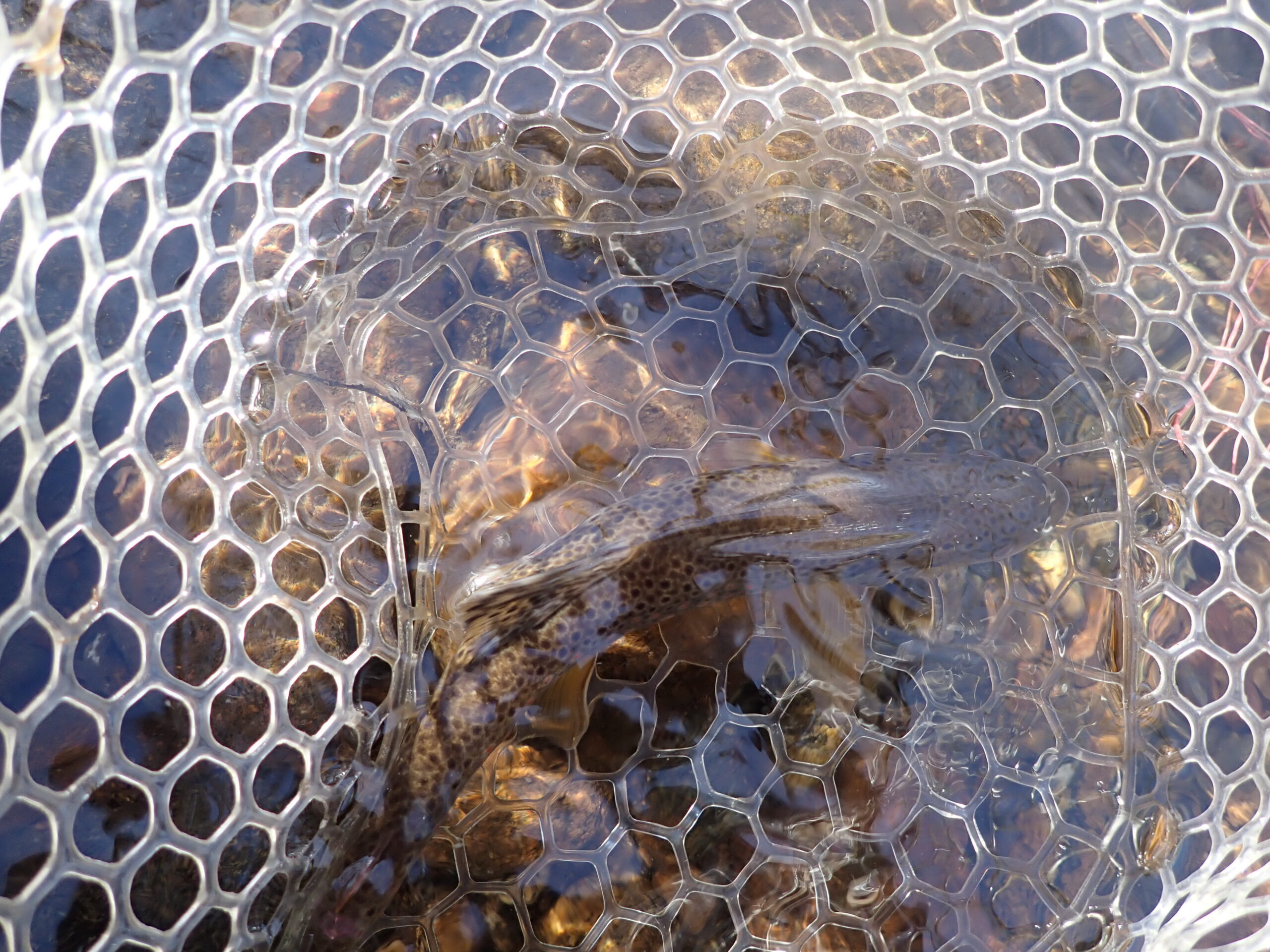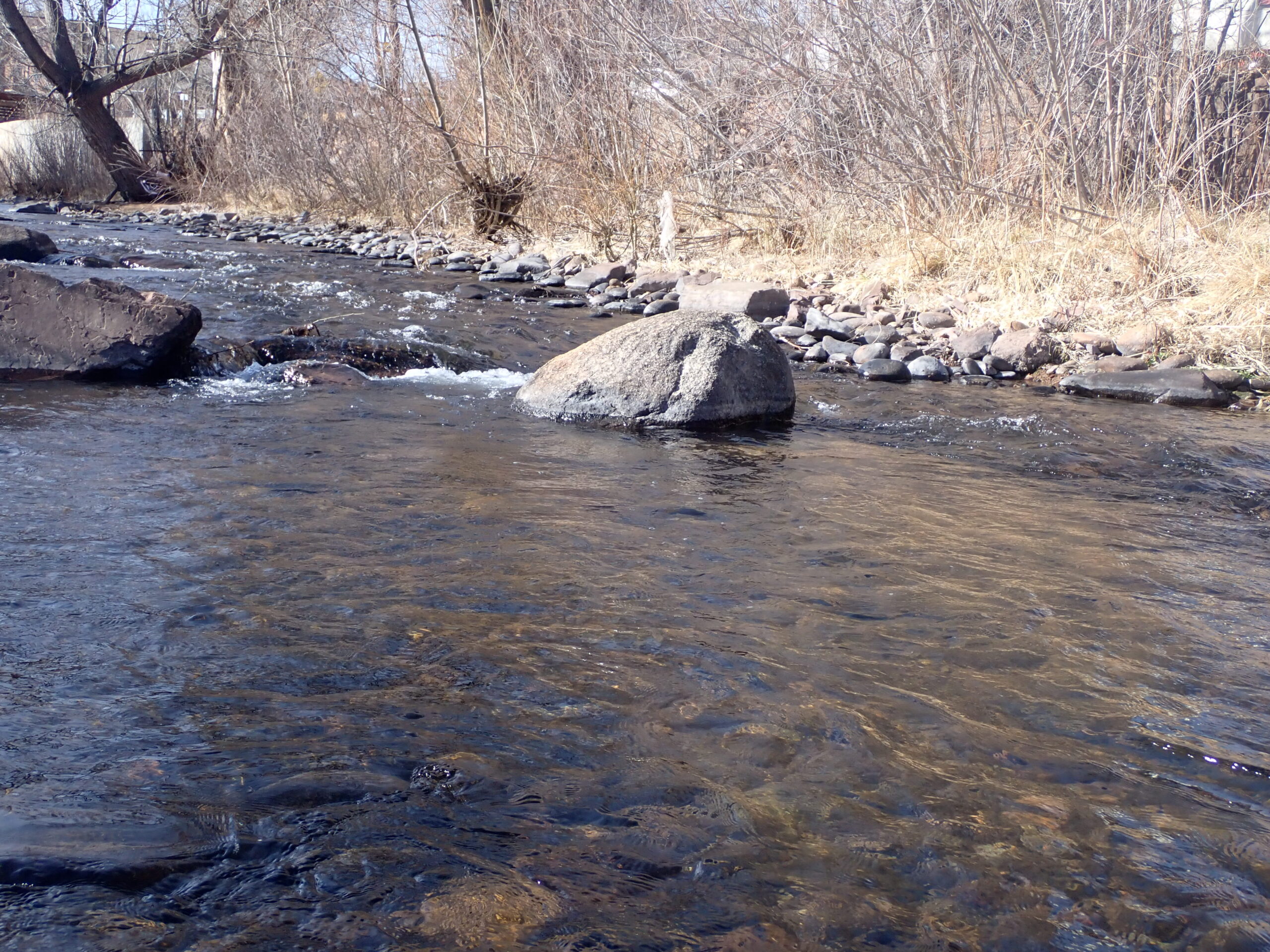Time: 2:15PM – 4:15PM
Location: Near Lyons, CO
St. Vrain Creek 02/28/2025 Photo Album
The last day of February was projected to spike at a high in the upper sixties in Denver, CO, so I researched temperatures in nearby potential fishing destinations. My first outing of 2025 was Boulder Creek, so I decided to journey a bit farther north to St. Vrain Creek. Temperatures in the vicinity of my planned fly fishing venture were predicted to be in the low sixties. That was acceptable to this fair weather angler.
Jane and I took advantage of the gorgeous late winter day to play pickleball, and when I returned home, I downed my lunch and packed the car and departed for my planned fly fishing destination. Once I arrived at my pullout, I wore my Brooks long sleeve thermal undershirt, and I chose not to add any additional layers. I selected my Orvis Access four weight and clamped my Battenkill reel to the butt section, and this line featured the loop, that I repaired using the Restorline kit that I bought at The Fly Fishing Show. It worked quite well.
I cut to the stream, when I was prepared, and I knotted a peacock hippie stomper to my line and then added a beadhead hares ear nymph as a dropper. I extended the dropper tippet so that I had approximately three feet of leader below the stomper. The creek was relatively low, and I fishing marginal slots and riffles in the first fifteen minutes. I experienced one refusal to the hippie stomper in a nice deep run, and I landed a sub six inch brown trout on the hares ear.
 Decent Brown Took Hippie Stomper
Decent Brown Took Hippie Stomper
The next phase of my outing, however, took a positive turn. In a long relatively deep pool I flicked a cast toward the right bank. and suddenly the hippie stomper exploded, as a trout consumed the fake attractor. I immediately recognized a nice trout was on my line, and I was proven correct, when I slipped my net beneath a fifteen inch cutbow. What a surprise! The trout had a bronze background color on the body and a thin stripe of scarlet along its sides.
 Hippie Stomper Brown Was Right Below the Large Exposed Boulder
Hippie Stomper Brown Was Right Below the Large Exposed Boulder
Shortly after this reward for my efforts in February, a brown trout rose to slurp the stomper. Two trout on dry flies was more than I could have hoped for. I continued up the stream, as I looked for spots with depth, and I soon discovered that my beadhead hares ear broke off. It was not delivering much interest, so I replaced it with a size 14 ultra zug bug.
I now moved at a faster pace, as I knew that lingering on marginal water was a waste of time. I sought slower moving locations with a fair amount of depth, and this strategy paid off, as I landed another five over the remainder of my outing to boost the final total to seven. I was quite pleased with seven trout in two hours of fishing including the fifteen inch cutbow.
 Love the Scarlet Stripe Visible
Love the Scarlet Stripe Visible
Two of the additional landed trout were small rainbows, and the remaining three were brown trout in the nine to eleven inch range. The ultra zug bug accounted for the last five landed fish, as the hippie stomper assumed the role of indicator. I did witness another refusal to the hippie stomper.
 Rainbow Came from This Nice Deep Run
Rainbow Came from This Nice Deep Run
By 4:15PM the shadows spanned the entire creek, and my hands were quite chilled, thus forcing me to abandon my sungloves. I covered several very attractive deep pools created by stream improvements, but the fish did not seem to be present in these prime lies. At 4:15PM I stripped in my flies and hooked them to my rod guide and hoofed back to my car.
Friday was a successful day on the last date in February. The one negative to the day was a wet right foot, as I squeezed quite a bit of water from my Smart Wool sock. The wetness began around my ankle, so I will attempt to remedy this situation on Saturday afternoon, if the weather cooperates.
Fish Landed: 7

 Cutbow Surprised Me
Cutbow Surprised Me Cutbow Home
Cutbow Home Pretty Brown Released
Pretty Brown Released


